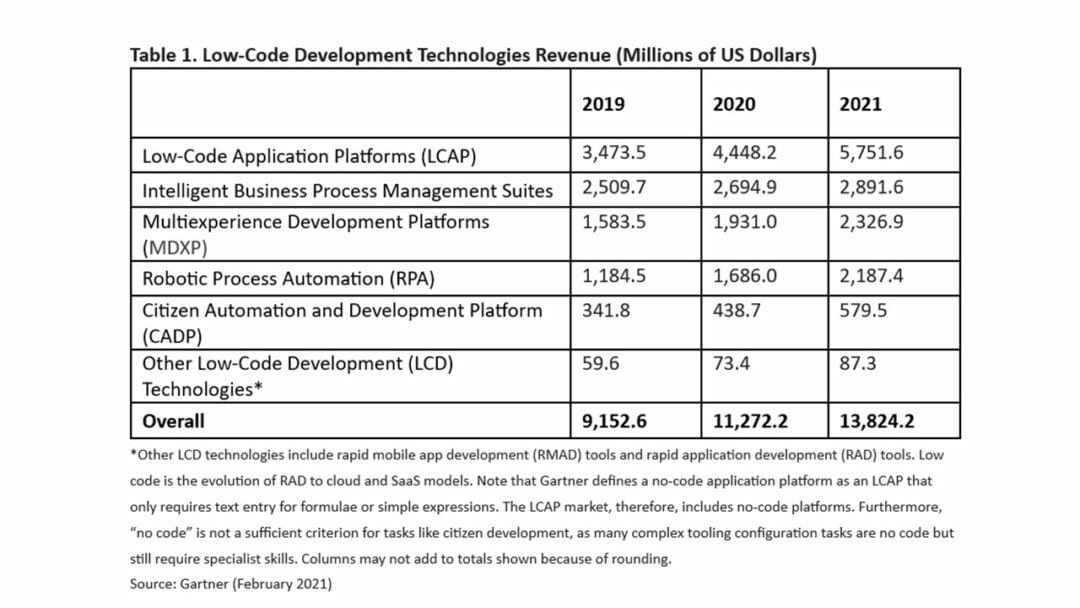According to the Gartner forecast, the surge in remote development during the Covid-19 pandemic will continue to boost low-code adoption, despite ongoing cost optimisation efforts.
Low-code as a general social and technological movement is expected to continue growing significantly in 2021, with low-code application platforms (LCAP) expected to remain the largest component of the market, increasing nearly 30% from 2020 to reach $5.8 billion.
“While low-code application development is not new, a confluence of digital disruptions, hyperautomation and the rise of composable business has led to an influx of tools and rising demand,” said Fabrizio Biscotti, research vice-president at Gartner.

The rise in low-code development has been influenced by increasing demand for faster application delivery and time to value, led by custom software solutions in support of digital transformation, which IT leaders have had to meet. These demands have sparked the emergence of citizen developers outside of IT.
According to Gartner research, an average of 41% of employees outside of IT – or business technologists – customise or build data or technology solutions, and it’s predicted that half of all new low-code clients will come from business buyers that are outside the IT organisation by year-end 2025.
“The economic consequences of the Covid-19 pandemic have validated the low-code value proposition,” said Biscotti.
“Low-code capabilities that support remote work function, such as digital forms and workflow automation, will be offered with more elastic pricing since they will be required to keep the lights running.”
How low-code eases the strain on engineers
SaaS and hyperautomation
In addition, all major software-as-a-service (SaaS) vendors currently provide capabilities that incorporate low-code development technologies, and going forward, growth in LCAPs and process automation tooling will correlate with the rise in SaaS’s popularity, says Gartner.
Another growing area of tech that will drive low-code adoption is hyperautomation, with business technologists wanting to create and execute their own ideas to drive more automation across their business applications and workflows.
Biscotti continued: “Globally, most large organisations will have adopted multiple low-code tools in some form by year-end 2021.
“In the longer term, as companies embrace the tenets of a composable enterprise, they will turn to low-code technologies that support application innovation and integration.”










